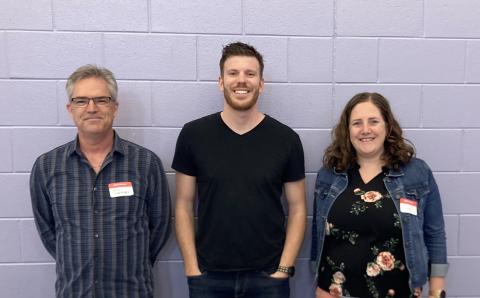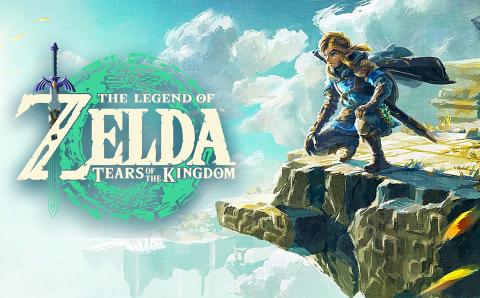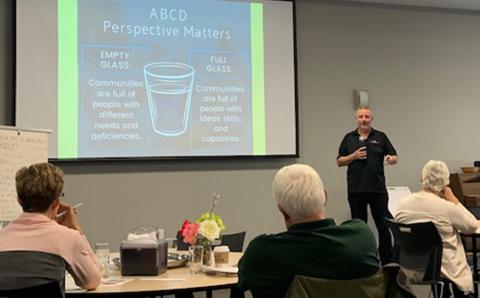Editor’s note: This is the first in a three-part series about what enduring values have helped hold us together in the Christian Reformed Church, and what might continue to hold us together going forward.
In 2021 I wrote a series of articles for The Banner on controversies in the Christian Reformed Church. It explored how our conflicts have been characteristically Reformed, but I also emphasized that we’ve never been just Reformed. Being an immigrant church, becoming American and Canadian, and growing more bourgeois and ethnically diverse also have shaped our conflicts.
What about the other side of the story? What enduring loves have held the CRC together more often than not over the past century and a half? How have religious and cultural characteristics shaped our loves? What has made us feel at home in our congregations and in the CRC across North America, even during family squabbles?
One source of our enduring loves surely is our shared Reformed tradition. But what of it? A way of reading Scripture? A set of doctrines? A commitment to preaching? Liturgy and music? Sunday school and catechism classes? A philosophy of Christian life? Magazines like The Banner, Calvinist Contact, Reformed Journal, and Outlook? Christian schools? I wonder if it might be the experience of covenant and the way it connects religion and culture.
Holding Together
Growing up in immigrant CRC churches in Canada in the 1970s and 1980s, simple things helped me know when I was home: peppermints passed around when the sermon began; soup and buns for lunch after church so mum did not have to cook op zondag (on Sunday); the Dutch-accented English of the minister; and keeping to ourselves, religiously and ethnically.
Being at home in the CRC was inseparable from life outside of church. The hairdresser, mechanic, butcher, deli owner, and insurance agent typically were Dutch CRC folk—onze mensen (our people). Calvinist Contact, a magazine started by Dutch immigrants to Canada in the 1940s, also bound us together, as had similar magazines in the United States in the 1800s and early 1900s.
In a mix of Dutch and English, Calvinist Contact told stories about Dutch immigrants, Canadian society, and Christianity, all from a Reformed perspective. Our stories. The classifieds included personal ads (immigrants looking for romance), job ads (e.g., for Christian school teachers), and notices about marriages, births, and deaths. The Banner similarly connected us to the CRC across North America. We saw beyond our face-to-face communities and envisioned ourselves as part of a continent-wide community and global Reformed tradition. We learned how to be Reformed—not just on Sunday, but every day.
At the heart of this ethno-religious community was our Reformed faith, of course, and notably its emphasis on covenant—God with us as a covenanted community. The CRC helped sponsor and settle immigrants like my grandparents and parents in the 1940s and 1950s. They soon started going to Calvin College (now University) and Seminary (and Dordt, Trinity Christian, King’s, and Redeemer) and serving in the CRC and its schools—my pastor father among them. I remember CRC Sunday school material and the blue Psalter Hymnal. I later took a course at Calvin with the professor who wrote our catechism study guide.
It might sound odd, but what also comes to mind for me is funerals. I remember my Opa Visscher’s funeral in the church that he helped build. I was 12. And the funeral for two cousins who died in a car accident. I was 23. And three years later, the funeral of my mother, who died in her 50s. It drew people from churches my father had served over three decades.
These funerals packed the churches. The sermons and prayers affirmed our grief and acknowledged the doubts and anger that untimely deaths inspire. They also grounded us in God’s promises. The hymns and psalms knitted us together as families and communities, reminding us that the church transcends time. With God’s Spirit in us, our singing raised the roofs and carried us upward in hope for a time when the Almighty will make all things new.
We had soup and buns for lunch in church fellowship halls afterwards, with Dutch pastries, strong coffee, and tea. I remember hearing stories that went back to World War II and to the immigration experiences of my parents’ and grandparents’ generations. We caught up with people we saw only at funerals and weddings. Funerals were a grief and a blessing both.
A Shared Culture
My experiences illustrate the religious and cultural characteristics of the communities, networks, and institutions that made the CRC home for me. I’m not being nostalgic about them. My point is that examples like these explain how faith and belonging “work” in daily life—for good and ill.
The belonging I experienced seemed seamless. The Bible and Reformed doctrines defined our faith, to be sure. But inseparable from our faith life was a shared culture, one where we negotiated being Dutch, Reformed, and Canadian. As a historian, and from talking with my students, I know that people from many backgrounds tell such stories: Scottish Canadian Presbyterians, Italian American Catholics, and Korean American Christian Reformed folk, to name just a few. We’re not unique.
We can separate ethnicity and other aspects of culture in our church life from the religious elements, but only in the abstract. Reformed Christians often emphasize how faith transforms cultures, and that’s true. But those cultures in turn shape the faith in distinct ways as Christianity grows roots in them. It goes both ways. God made us as creatures of time, place, and soil—and it shows.
The schools that Dutch Canadians built in the 1950s and 1960s were meant to be Christian, not Dutch. As kids, however, we viewed them as Dutch. So too did locals, “Canadians,” in this case, meant “not us.” They surely found us standoffish, too good for their public schools. Today, those Christian schools are more diverse ethnically, but it took decades and difficult transitions. Some schools didn’t survive; others are “not the same,” at least for old-timers. The relationships between families and schools likely are more transactional today and less covenantal.
The same is true of our churches. What set us apart and kept us tight-knit, even when we fought, threatened divorce, and occasionally suffered splits, were the connections between culture and faith and the networks that sustained both. “Tight-knit” also could be claustrophobic, narrow, and haughty. Through it all we were still “our people.”
The waning of immigrant experiences and Dutch ethnic identity happened quickly in Canada, over three generations (1950s-1990s). (It took longer in the United States, with its many waves of Dutch immigration between the 1840s and 1950s.) Plus, we had cable TV to help make us into Canadians. The solidarity that held us together—solidarity that also kept others out—no longer does, at least not in the same way.
What happens to belonging, for good and ill, when the cultural context of a religious community evolves, as ethnic identities fade, and diversity brings new energy and turbulence? Remember, too, that religious contexts evolve along with the cultural changes.
This article has been about what shapes being at home in a religious community. It’s always a cultural and religious stew, much like we find with the Hebrew, then Jewish, gentile, and Christian communities in the Scriptures. My next two articles, coming in the next two Banner issues, will look at what has happened to “belonging” in the CRC in the past 75 years amid ethnocultural and religious changes and will suggest what “belonging” might look like going forward.
About the Author
Will Katerberg is a professor of history and curator of Heritage Hall at Calvin University in Grand Rapids, Mich. He is a member of Church of the Servant CRC in Grand Rapids.









